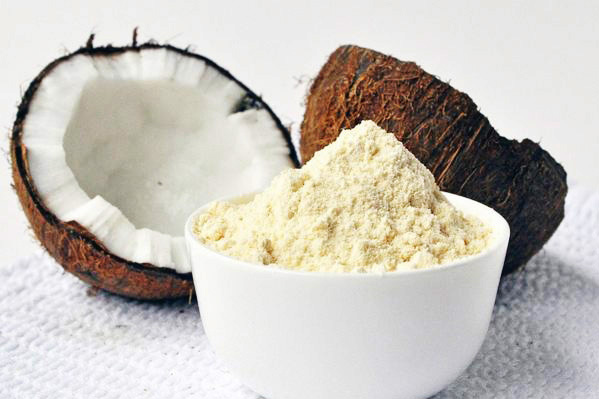In recent years Guyana has secured a much greater insight into the economic value of the coconut primarily on account of significantly enhanced awareness of the value of its liquid – coconut water. As a beverage coconut water has always been hugely popular across Guyana though efforts to break into the external (mostly regional) market has met with only limited success primarily on account of intra-regional health considerations. A rather less popular by-product of the coconut is the flour manufactured from the ‘flesh’ of the fruit and which, like its sister product (coconut water) has also stormed onto the global market as a health product.
In terms of value, the global coconut flour market is estimated to be worth in excess of US$380 million though by 2027 its value is expected to double. It is an attractive prospect for a country like Guyana which, its technological capabilities apart, is possessed of an agro-processing sector that has the daring to seek to take advantage of the global market. Ambition, however, has its limitations and up until now coconut flour manufactured here has only been used in limited experiments with baked products.
An examination of the coconut flour market in North America reveals that it is estimated to be valued at more than US$140 million. In 2017, the coconut flour market in the North America region is estimated to be valued at more than US$140 million and is expected to reach nearly US$274 million by the end of 2027. Both the volume and value in the export of coconut flour market are showing a significant increase.
The rise of coconut flour as a popular food product is linked to gluten intolerance associated with wheaten flour. With millions of consumers around the world possessing a gluten allergy, coconut flour has found its way into their diets and seems set to remain there. These days a variety of products made from coconut flour are available on the market. These include breads, cookies, muffins, pancakes and cakes. There are times when coconut flour baked products can be found in limited quantities in Guyana. Globally, it is estimated that 30% of consumers are choosing gluten free products and almost 41% of the consumers in the United States believe that gluten free products offer significant health benefits. All of these factors are boosting the market for coconut flour, especially in North America.
What also makes coconut flour a market attraction is the low cost element in its production. This has enabled new players to enter the market apart from which it has opened up opportunities for coconut flour to be manufactured in relatively low-tech countries like Guyana.
With large scale coconut production in the United States restricted by less than favourable weather there are market opportunities there for other countries in the region. To break into the US market, however, countries like Guyana must face some formidable food safety laws which have already been overcome by the ‘big players in the sector from Latin America and the Asia Pacific region. Up until 2010 Brazil was the top coconut producing country in the world. The Philippines, Indonesia and India are now the major coconut producing countries. Almost 90% of the global supply of coconuts comes from Asia with the Philippines exporting more than $1 billion worth of coconuts to the United States alone.
Individual consumers are gradually becoming aware about the various beneficial properties of coconut flour. Coconut flour products are surging in the market as an alternative for baking ingredients in the United States and Europe. It is gaining traction amongst consumers during festive seasons such as Christmas and New Year Eve in Europe. The ingredient is being added to supplement healthy diets owing to its benefits such as antibacterial and antifungal properties.
It is perhaps a fortunate coincidence that the continued rise of coconut flour is coinciding with a significant growth period in Guyana’s agro processing sector. Recent events for local agro processors including the two UNCAPPED display events, attest to the ingenuity of an agro processing sector that has grown considerably over the past five years.
How to make coconut flour
● Soak the unsweetened coconut flakes for four hours. The ratio of water to coconut flakes needs to be 4:1.
● Using a food processor, process the coconut until it is smooth.
● Put all of the coconut mixture into the cheesecloth and squeeze as much as you can. Get all of the water out of it. This fluid is the coconut milk. Refrigerate the coconut milk for use.
● Spread the pulp in the cheesecloth onto a baking sheet.
● Bake in a 200 degree Fahrenheit oven until dry.
● Process in the food processor, or something similar, until you have the flour that you need.
What makes coconut flour an attractive prospect for Guyana’s agro processing sector is the fact that it requires no massive investment in factory and equipment. That, coupled with the fact of major development in packaging and labeling in recent years, means the coconut flour can be manufactured utilizing relatively inexpensive equipment and without the benefit of an elaborate factory. Ideally, coconut flour can be added to the product range of existing agro processors who have already established a brand, is experienced in compliance with safety and health rules and already has prior experience in product marketing.










